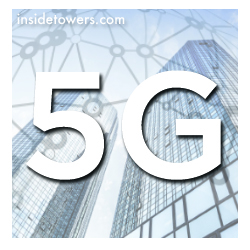One more reason to love 5G. And a good one at that. Wireless communications, particularly 5G, will make industries more efficient, which will reduce their carbon footprint, as they work to reduce global warming, according to MIT Technology Review Insights, in an article co-authored with Ericsson.
“Corporations must redouble their greenhouse gas emissions reduction and removal efforts with speed and precision — but to do this, they must also commit to deep operational and organizational transformation,” the MIT piece reads. “5G and other cellular technology can enable increasingly interconnected supply chains and networks, improve data sharing, optimize systems, and increase operational efficiency….to reduce carbon emissions.”
MIT went on to say that industries such as energy, manufacturing, and transportation — the biggest polluters — could have the biggest impact on decarbonization efforts through the use of 5G.
“5G could help businesses and public infrastructure providers focus on business transformation and reduction of harmful emissions,” MIT wrote. “This requires effective digital management and monitoring of distributed operations with resilience and analytic insight. 5G will help factories, logistics networks, power companies, and others operate more efficiently, more consciously, and more purposely in line with their explicit sustainability objectives through better insight and more powerful network configurations.”
A whitepaper, “Decarbonizing industries with connectivity & 5G,” published by MIT and Ericsson, looks at different industries and how 5G network infrastructure can be an “immediate enabler” of carbon reduction.
For example, in the electricity and energy supply industry, use of solar and wind creates challenges in management and operation, according to the white paper. 5G can allow better data management, energy storage and distribution management. “5G technologies in particular will, in turn, be a critical tool in enhancing edge connectivity, as they provide higher levels of reconfigurability for power grids, allowing local networks to work separately from the main network and help renewable energy installations operate more dynamically and efficiently,” the white paper reads.
Cellular-connected production management systems and IoT tracking could allow manufacturers to cut emissions in half by 2030, according to the white paper, allowing more efficient temperature and humidity control in factories; thereby, reducing electricity consumption, lessening inventory waste and extending the shelf life of vaccines and microprocessors. In the area of transportation, technologies such as telematics, smart city analytics and traffic management solutions are tailor-made to create efficiencies that reduce carbon emissions.
“The transportation world will soon be ubiquitously connected, electrified, and autonomous,” says Tony Sandberg, Director of E-mobility for the Swedish commercial vehicle manufacturer Scania Group. “These trends, in turn, will cause an entire ecosystem of connectivity to grow around transportation industry participants.”
By J. Sharpe Smith Inside Towers Technology Editor




Reader Interactions